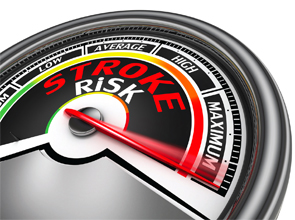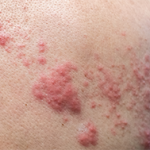
Image Credit: donskarpo/shutterstock.com
SAN FRANCISCO—The risk of stroke after herpes zoster (HZ) infection is elevated in the period immediately after infection in patients with autoimmune diseases, according to a study presented at the 2015 ACR/ARHP Annual Meeting.1
The findings were presented in a scientific session, called Discover 2015, that highlighted new research. In another study from the session, researchers reported findings showing that intra-articular corticosteroids are safe and have no major effect on structural progression of synovitic knee osteoarthritis (OA).2
Increased Stroke Risk

Dr. Calabrese
In the herpes zoster study, researchers from the Cleveland Clinic looked at Medicare data from 2006 through 2013, pulling data on patients with rheumatoid arthritis, inflammatory bowel disease, psoriatic arthritis, psoriasis and ankylosing spondylitis, said Leonard Calabrese, DO, head of the clinic’s Section of Clinical Immunology. To be included, subjects must not have had a previous stroke or a previous diagnosis of HZ or have taken an antiviral drug.
Researchers tracked patients after an HZ diagnosis, and the main outcome was hospitalized stroke.
For all types of HZ, incidence of stroke was higher in the period right after the diagnosis, with 1.4 hospitalized strokes per 100 patient-years up to 30 days after diagnosis, and 1.2 in the second and third months after diagnosis. The stroke incidence continued to trail off after that.
Among those with serious or complicated HZ types—such as HZ of the cranial nerve or herpes zoster ophthalmicus—the difference was even more striking. The incidence within the first 30 days of diagnosis was 3.3 per 100 patient-years, and 1.8 in the second and third months, after which the incidence fell off.
The same pattern with respect to stroke and time from HZ diagnosis held true after adjustment for age, sex, diabetes, hypertension, atrial fibrillation, transient ischemic attack and glucocorticoid use.
Researchers found the incidence rate was higher among those who had not received anti-viral therapy within seven days of their HZ diagnosis. This was consistent with another publication, Dr. Calabrese said.3
“Immunosuppressed patients appear to be at an increased risk of stroke immediately after zoster, particularly in the first 30 days,” Dr. Calabrese said. He also said the data suggest that patients with immune-mediated diseases are under-protected because of a low rate of vaccination.
“They may be missing an additional downstream benefit of vaccination—subsequent reduction in stroke,” he said. “Collectively, on the basis of these data, we think that new strategies to optimize [the] prompt diagnosis and treatment [of], as well as preventive measures for, zoster are urgently needed.”
Intra-articular Corticosteroids & Knee OA
In the osteoarthritis study, researchers found no major effect of intra-articular corticosteroids on structural progress in knee OA patients. The therapy is widely used for knee pain in OA, but there is concern that it could accelerate damage to the knee. These findings might help ease those concerns.
